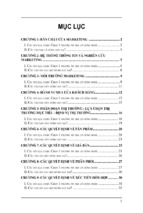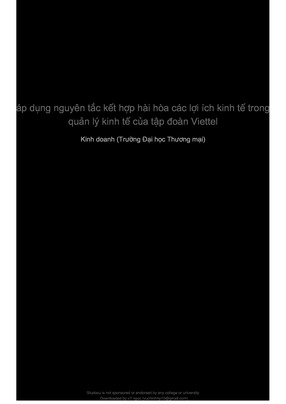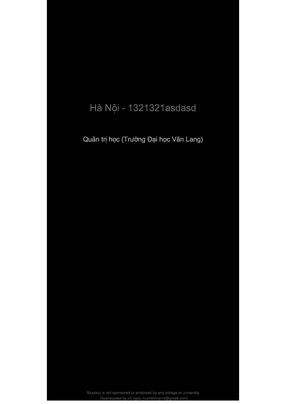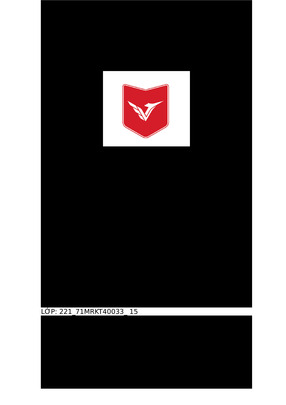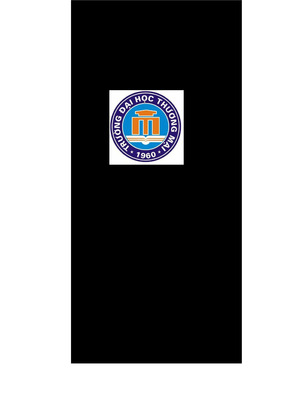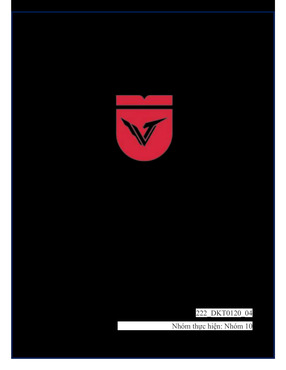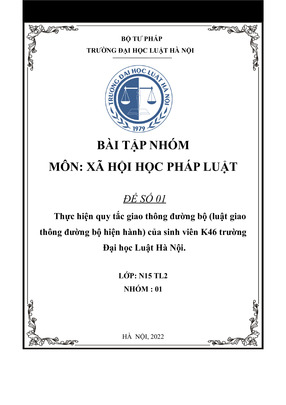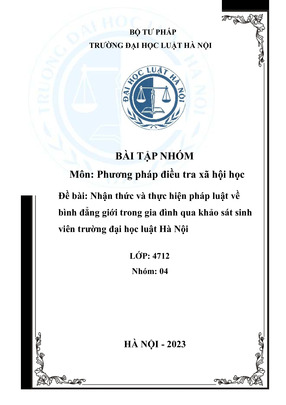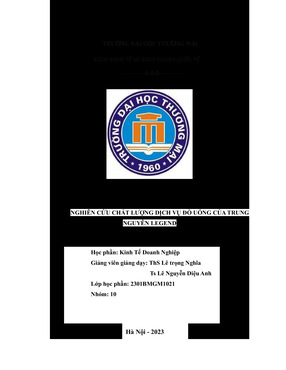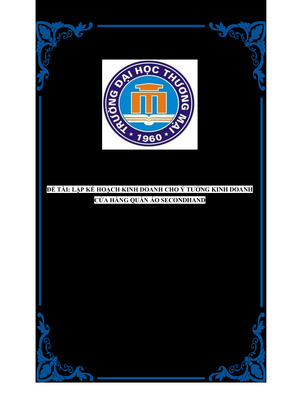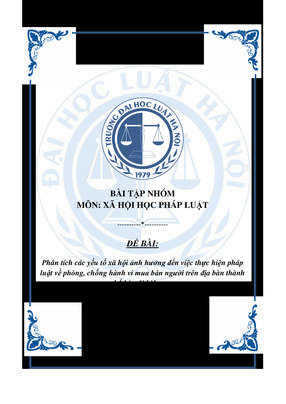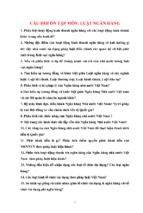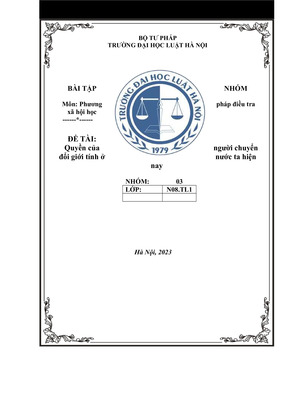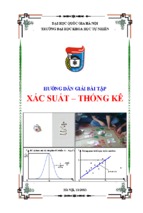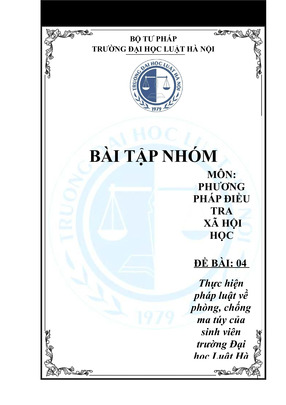International Standard Banking Practice
for the Examination of Documents
under Documentary Credits subject to UCP 600 (ISBP)
1
CONTENTS
Page
INTRODUCTION
PRELIMINARY CONSIDERATIONS
The application and issuance of the credit
GENERAL PRINCIPLES
Abbreviations
Certifications and declarations
Corrections and alterations
Dates
Documents for which the UCP 600 transport articles do not apply
Expressions not defined in UCP 600
Issuer of documents
Language
Mathematical calculations
Misspellings or typing errors
Multiple pages and attachments or riders
Originals and copies
Shipping marks
Signatures
Title of documents and combined documents
DRAFTS AND CALCULATION OF MATURITY DATE
Tenor
Maturity date
Banking days, grace days, delays in remittance
Endorsement
Amounts
How the draft is drawn
Drafts on the applicant
Corrections and alterations
INVOICES
Definition of invoice
Description of the goods and other general issues related to invoices
2
TRANSPORT DOCUMENT COVERING AT LEAST TWO DIFFERENT MODES OF
TRANSPORT
Application of UCP 600 article 19
Full set of originals
Signing of multimodal transport documents
On board notations
Place of taking in charge, dispatch, loading on board and destination
Consignee, order party, shipper and endorsement, notify party
Transhipment and partial shipment
Clean multimodal transport documents
Goods description
Corrections and alterations
Freight and additional costs
Goods covered by more than one multimodal transport document
BILL OF LADING
Application of UCP 600 article 20
Full set of originals
Signing of bills of lading
On board notations
Ports of loading and ports of discharge
Consignee, order party, shipper and endorsement, notify party
Transhipment and partial shipment
Clean bills of lading
Goods description
Corrections and alterations
Freight and additional costs
Goods covered by more than one bill of lading
CHARTER PARTY BILL OF LADING
Application of UCP 600 article 22
Full set of originals
Signing of charter party bills of lading
On board notations
Ports of loading and ports of discharge
Consignee, order party, shipper and endorsement, notify party
Partial shipment
Clean charter party bills of lading
Goods description
Corrections and alterations
Freight and additional costs
3
AIR TRANSPORT DOCUMENT
Application of UCP 600 article 23
Original air transport documents
Signing of air transport documents
Goods accepted for carriage, date of shipment, and requirement for an actual date of
dispatch
Airports of departure and destination
Consignee, order party and notify party
Transhipment and partial shipment
Clean air transport documents
Goods description
Corrections and alterations
Freight and additional costs
ROAD, RAIL OR INLAND WATERWAY TRANSPORT DOCUMENTS
Application of UCP 600 article 24
Original and duplicate of road, rail or inland waterway transport documents
Carrier and signing of road, rail or inland waterway transport documents
Order party and notify party
Partial shipment
Goods description
Corrections and alterations
Freight and additional costs
INSURANCE DOCUMENT AND COVERAGE
Application of UCP 600 article 28
Issuers of insurance documents
Risks to be covered
Dates
Currency and amount
Insured party and endorsement
CERTIFICATES OF ORIGIN
Basic requirements
Issuers of certificates of origin
Contents of certificates of origin
4
INTRODUCTION
Since the approval of International Standard Banking Practice (ISBP) by the ICC Banking
Commission in 2002, ICC Publication 645 has become an invaluable aid to banks, corporates,
logistics specialists and insurance companies alike, on a global basis. Participants in ICC
seminars and workshops have indicated that rejection rates have dropped due to the application
of the 200 practices that are detailed in ISBP.
However, there have also been comments that although the ISBP Publication 645 was approved
by the Banking Commission its application had no relationship with UCP 500. With the
approval of UCP 600 in October 2006, it has become necessary to provide an updated version
of the ISBP. It is emphasized that this is an updated version as opposed to a revision of ICC
Publication 645. Where it was felt appropriate, paragraphs that appeared in Publication 645 and
that have now been covered in effectively the same text in UCP 600 have been removed from
this updated version of ISBP.
As a means of creating a relationship between the UCP and ISBP, the introduction to UCP 600,
states: “During the revision process, notice was taken of the considerable work that had been
completed in creating the International Standard Banking Practice for the Examination of
Documents under Documentary Credits (ISBP), ICC Publication 645. This publication has
evolved into a necessary companion to the UCP for determining compliance of documents with
the terms of letters of credit. It is the expectation of the Drafting Group and the Banking
Commission that the application of the principles contained in the ISBP, including subsequent
revisions thereof, will continue during the time UCP 600 is in force. At the time UCP 600 is
implemented, there will be an updated version of the ISBP to bring its contents in line with the
substance and style of the new rules.”
The international standard banking practices documented in this publication are consistent with
UCP 600 and the Opinions and Decisions of the ICC Banking Commission. This document
does not amend UCP 600. It explains how the practices articulated in UCP 600 are applied by
documentary practitioners. This publication and the UCP should be read in their entirety and
not in isolation. It is, of course, recognized that the law in some countries may compel a
different practice than those stated here.
No single publication can anticipate all the terms or the documents that may be used in
connection with documentary credits or their interpretation under UCP 600 and the standard
practice it reflects. However, the Task Force that prepared Publication 645 endeavoured to
cover terms commonly seen on a day-to-day basis and the documents most often presented
under documentary credits. The Drafting Group have reviewed and updated this publication to
conform with UCP 600.
It should be noted that any term in a documentary credit which modifies or excludes the
applicability of a provision of UCP 600 may also have an impact on international standard
banking practice. Therefore, in considering the practices described in this publication, parties
must take into account any term in a documentary credit that expressly modifies or excludes a
rule contained in UCP 600. This principle is implicit throughout this publication. Where
examples are given, these are solely for the purpose of illustration and are not exhaustive.
5
This publication reflects international standard banking practice for all parties to a documentary
credit. Since applicants’ obligations, rights and remedies depend upon their undertaking with
the issuing bank, the performance of the underlying transaction and the timeliness of any
objection under applicable law and practice, applicants should not assume that they may rely on
these provisions in order to excuse their obligations to reimburse the issuing bank. The
incorporation of this publication into the terms of a documentary credit should be discouraged,
as the requirement to follow agreed practices is implicit in UCP 600.
6
PRELIMINARY CONSIDERATIONS
The application and issuance of the credit
1)
The terms of a credit are independent of the underlying transaction even if a credit
expressly refers to that transaction. To avoid unnecessary costs, delays, and disputes in
the examination of documents, however, the applicant and beneficiary should
carefully consider which documents should be required, by whom they should be
produced and the time frame for presentation.
2)
The applicant bears the risk of any ambiguity in its instructions to issue or amend a
credit. Unless expressly stated otherwise, a request to issue or amend a credit
authorizes an issuing bank to supplement or develop the terms in a manner necessary
or desirable to permit the use of the credit.
3)
The applicant should be aware that UCP 600 contains articles such as 3, 14, 19, 20, 21,
23, 24, 28(i), 30 and 31 that define terms in a manner that may produce unexpected
results unless the applicant fully acquaints itself with these provisions. For example, a
credit requiring presentation of a bill of lading and containing a prohibition against
transhipment will, in most cases, have to exclude UCP 600 sub-article 20(c) to make
the prohibition against transhipment effective.
4)
A credit should not require presentation of documents that are to be issued or
countersigned by the applicant. If a credit is issued including such terms, the
beneficiary must either seek amendment or comply with them and bear the risk of
failure to do so.
5)
Many of the problems that arise at the examination stage could be avoided or resolved
by careful attention to detail in the underlying transaction, the credit application, and
issuance of the credit as discussed.
7
GENERAL PRINCIPLES
Abbreviations
6)
The use of generally accepted abbreviations, for example “Ltd.” instead of “Limited”,
“Int’l” instead of “International”, “Co.” instead of “Company”, “kgs” or “kos.” instead
of “kilos”, “Ind” instead of “Industry”, “mfr” instead of “manufacturer” or “mt”
instead of “metric tons” – or vice versa – does not make a document discrepant.
7)
Virgules (slash marks “/”) may have different meanings, and unless apparent in the
context used, should not be used as a substitute for a word.
Certifications and declarations
8)
A certification, declaration or the like may either be a separate document or contained
within another document as required by the credit. If the certification or declaration
appears in another document which is signed and dated, any certification or
declaration appearing on that document does not require a separate signature or date if
the certification or declaration appears to have been given by the same entity that
issued and signed the document.
Corrections and alterations
9)
Corrections and alterations of information or data in documents, other than documents
created by the beneficiary, must appear to be authenticated by the party who issued the
document or by a party authorized by the issuer to do so. Corrections and alterations in
documents which have been legalized, visaed, certified or similar, must appear to be
authenticated by the party who legalized, visaed, certified etc., the document. The
authentication must show by whom the authentication has been made and include the
signature or initials of that party. If the authentication appears to have been made by a
party other than the issuer of the document, the authentication must clearly show in
which capacity that party has authenticated the correction or alteration.
10)
Corrections and alterations in documents issued by the beneficiary itself, except drafts,
which have not been legalized, visaed, certified or similar, need not be authenticated.
See also “Drafts and calculation of maturity date”.
11)
The use of multiple type styles or font sizes or handwriting in the same document does
not, by itself, signify a correction or alteration.
12)
Where a document contains more than one correction or alteration, either each
correction must be authenticated separately or one authentication must be linked to all
corrections in an appropriate way. For example, if the document shows three
corrections numbered 1, 2 and 3, one statement such as “Correction numbers 1, 2 and 3
above authorized by XXX” or similar, will satisfy the requirement for authentication.
Dates
13)
Drafts, transport documents and insurance documents must be dated even if a credit
does not expressly so require. A requirement that a document, other than those
mentioned above, be dated, may be satisfied by reference in the document to the date
of another document forming part of the same presentation (e.g., where a shipping
8
certificate is issued which states “date as per bill of lading number xxx” or similar
terms). Although it is expected that a required certificate or declaration in a separate
document be dated, its compliance will depend on the type of certification or
declaration that has been requested, its required wording and the wording that appears
within it. Whether other documents require dating will depend on the nature and
content of the document in question.
14)
Any document, including a certificate of analysis, inspection certificate and
pre-shipment inspection certificate, may be dated after the date of shipment. However,
if a credit requires a document evidencing a pre-shipment event (e.g., pre-shipment
inspection certificate), the document must, either by its title or content, indicate that
the event (e.g., inspection) took place prior to or on the date of shipment. A
requirement for an “inspection certificate” does not constitute a requirement to
evidence a pre-shipment event. Documents must not indicate that they were issued
after the date they are presented.
15)
A document indicating a date of preparation and a later date of signing is deemed to be
issued on the date of signing.
16)
Phrases often used to signify time on either side of a date or event:
a) “within 2 days after” indicates a period from the date of the event until 2 days
after the event.
b) “not later than 2 days after” does not indicate a period, only a latest date. If an
advice must not be dated prior to a specific date, the credit must so state.
c) “at least 2 days before” indicates that something must take place not later than
2 days before an event. There is no limit as to how early it may take place.
d) “within 2 days of” indicates a period 2 days prior to the event until 2 days after
the event.
17)
The term “within” when used in connection with a date excludes that date in the
calculation of the period.
18)
Dates may be expressed in different formats, e.g., the 12th of November 2007 could be
expressed as 12 Nov 07, 12Nov07, 12.11.2007, 12.11.07, 2007.11.12, 11.12.07,
121107, etc. Provided that the date intended can be determined from the document or
from other documents included in the presentation, any of these formats are acceptable.
To avoid confusion it is recommended that the name of the month should be used
instead of the number.
Documents for which the UCP 600 transport articles do not apply
19)
Some documents commonly used in relation to the transportation of goods, e.g.,
Delivery Order, Forwarder’s Certificate of Receipt, Forwarder’s Certificate of
Shipment, Forwarder’s Certificate of Transport, Forwarder’s Cargo Receipt and
Mate’s Receipt do not reflect a contract of carriage and are not transport documents as
defined in UCP 600 articles 19 - 25. As such, UCP 600 sub-article 14(c) would not
apply to these documents. Therefore, these documents will be examined in the same
manner as other documents for which there are no specific provisions in UCP 600, i.e.,
under sub-article 14(f). In any event, documents must be presented not later than the
expiry date for presentation as stated in the credit.
9
20)
Copies of transport documents are not transport documents for the purpose of UCP
600 articles 19-25 and sub-article 14(c). The UCP 600 transport articles apply where
there are original transport documents presented. Where a credit allows for the
presentation of a copy transport document rather than an original, the credit must
explicitly state the details to be shown. Where copies (non-negotiable) are presented,
they need not evidence signature, dates, etc.
Expressions not defined in UCP 600
21)
Expressions such as “shipping documents”, “stale documents acceptable”, “third party
documents acceptable”, and “exporting country” should not be used as they are not
defined in UCP 600. If used in a credit, their meaning should be made apparent. If not,
they have the following meaning under international standard banking practice:
a)
b)
c)
d)
“shipping documents” – all documents (not only transport documents), except
drafts, required by the credit.
“stale documents acceptable” – documents presented later than 21 calendar
days after the date of shipment are acceptable as long as they are presented no
later than the expiry date for presentation as stated in the credit.
“third party documents acceptable” – all documents, excluding drafts but
including invoices, may be issued by a party other than the beneficiary. If it is
the intention of the issuing bank that the transport or other documents may
show a shipper other than the beneficiary, the clause is not necessary because
it is already permitted by sub-article 14(k).
“exporting country” – the country where the beneficiary is domiciled, or the
country of origin of the goods, or the country of receipt by the carrier or the
country from which shipment or dispatch is made.
Issuer of documents
22)
If a credit indicates that a document is to be issued by a named person or entity, this
condition is satisfied if the document appears to be issued by the named person or
entity. It may appear to be issued by a named person or entity by use of its letterhead,
or, if there is no letterhead, the document appears to have been completed or signed by,
or on behalf of, the named person or entity.
Language
23)
Under international standard banking practice, it is expected that documents issued by
the beneficiary will be in the language of the credit. When a credit states that
documents in two or more languages are acceptable, a nominated bank may, in its
advice of the credit, limit the number of acceptable languages as a condition of its
engagement in the credit.
Mathematical calculations
24)
Detailed mathematical calculations in documents will not be checked by banks. Banks
are only obliged to check total values against the credit and other required documents.
10
Misspellings or typing errors
25)
A misspelling or typing error that does not affect the meaning of a word or the sentence
in which it occurs, does not make a document discrepant. For example, a description of
the merchandise as “mashine” instead of “machine”, “fountan pen” instead of
“fountain pen” or “modle” instead of “model” would not make the document
discrepant. However, a description as “model 123” instead of “model 321” would not
be regarded as a typing error and would constitute a discrepancy.
Multiple pages and attachments or riders
26)
Unless the credit or a document provides otherwise, pages which are physically bound
together, sequentially numbered or contain internal cross references, however named
or entitled, are to be examined as one document, even if some of the pages are regarded
as an attachment. Where a document consists of more than one page, it must be
possible to determine that the pages are part of the same document.
27)
If a signature or endorsement is required to be on a document consisting of more than
one page, the signature is normally placed on the first or last page of the document, but
unless the credit or the document itself indicates where a signature or endorsement is
to appear, the signature or endorsement may appear anywhere on the document.
Originals and copies
28)
Documents issued in more than one original may be marked “Original”, “Duplicate”,
“Triplicate”, “First Original”, “Second Original”, etc. None of these markings will
disqualify a document as an original.
29)
The number of originals to be presented must be at least the number required by the
credit, the UCP 600, or, where the document itself states how many originals have
been issued, the number stated on the document.
30)
It can sometimes be difficult to determine from the wording of a credit whether it
requires an original or a copy, and to determine whether that requirement is satisfied
by an original or a copy.
For example, where the credit requires:
a)
b)
c)
“Invoice”, “One Invoice” or “Invoice in 1 copy”, it will be understood to be a
requirement for an original invoice.
“Invoice in 4 copies”, it will be satisfied by the presentation of at least one
original and the remaining number as copies of an invoice.
“One copy of Invoice”, it will be satisfied by presentation of either a copy or an
original of an invoice.
31)
Where an original would not be accepted in lieu of a copy, the credit must prohibit an
original, e.g., “photocopy of invoice – original document not acceptable in lieu of
photocopy”, or the like. Where a credit calls for a copy of a transport document and
indicates the disposal instructions for the original of that transport document, an
original transport document will not be acceptable.
32)
Copies of documents need not be signed.
11
33)
In addition to UCP 600 article 17, the ICC Banking Commission Policy Statement,
document 470/871(Rev), titled “The determination of an “Original” document in the
context of UCP 500 sub-Article 20(b)” is recommended for further guidance on
originals and copies and remains valid under UCP 600. The content of the Policy
Statement appears in the Appendix of this publication, for reference purposes.
Shipping marks
34)
The purpose of a shipping mark is to enable identification of a box, bag or package. If
a credit specifies the details of a shipping mark, the documents mentioning the marks
must show these details, but additional information is acceptable provided it is not in
conflict with the credit terms.
35)
Shipping marks contained in some documents often include information in excess of
what would normally be considered “shipping marks”, and could include information
such as the type of goods, warnings as to the handling of fragile goods, net and/or gross
weight of the goods, etc. The fact that some documents show such additional
information, while others do not, is not a discrepancy.
36)
Transport documents covering containerized goods will sometimes only show a
container number under the heading “Shipping marks”. Other documents that show a
detailed marking will not be considered to be in conflict for that reason.
Signatures
37)
Even if not stated in the credit, drafts, certificates and declarations by their nature
require a signature. Transport documents and insurance documents must be signed in
accordance with the provisions of UCP 600.
38)
The fact that a document has a box or space for a signature does not necessarily mean
that such box or space must be completed with a signature. For example, banks do not
require a signature in the area titled “Signature of shipper or their agent” or similar
phrases, commonly found on transport documents such as air waybills or road
transport documents. If the content of a document indicates that it requires a signature
to establish its validity (e.g., “This document is not valid unless signed” or similar
terms), it must be signed.
39)
A signature need not be handwritten. Facsimile signatures, perforated signatures,
stamps, symbols (such as chops) or any electronic or mechanical means of
authentication are sufficient. However, a photocopy of a signed document does not
qualify as a signed original document, nor does a signed document transmitted through
a fax machine, absent an original signature. A requirement for a document to be
“signed and stamped”, or a similar requirement, is also fulfilled by a signature and the
name of the party typed, or stamped, or handwritten, etc.
40)
A signature on a company letterhead paper will be taken to be the signature of that
company, unless otherwise stated. The company name need not be repeated next to the
signature.
Title of documents and combined documents
41)
Documents may be titled as called for in the credit, bear a similar title, or be untitled.
For example, a credit requirement for a “Packing List” may also be satisfied by a
document containing packing details whether titled “Packing Note”, “Packing and
12
Weight List”, etc., or an untitled document. The content of a document must appear to
fulfil the function of the required document.
42)
Documents listed in a credit should be presented as separate documents. If a credit
requires a packing list and a weight list, such requirement will be satisfied by
presentation of two separate documents, or by presentation of two original copies of a
combined packing and weight list, provided such document states both packing and
weight details.
13
DRAFTS AND CALCULATION OF MATURITY DATE
Tenor
43)
The tenor must be in accordance with the terms of the credit.
a)
b)
c)
d)
e)
f)
44)
If a draft is drawn at a tenor other than sight, or other than a certain period after
sight, it must be possible to establish the maturity date from the data in the
draft itself.
As an example of where it is possible to establish a maturity date from the data
in the draft, if a credit calls for drafts at a tenor 60 days after the bill of lading
date, where the date of the bill of lading is 12 July 2007, the tenor could be
indicated on the draft in one of the following ways:
i.
“60 days after bill of lading date 12 July 2007”, or
ii.
“60 days after 12 July 2007”, or
iii. “60 days after bill of lading date” and elsewhere on the face of the draft
state “bill of lading date 12 July 2007”, or
iv. “60 days date” on a draft dated the same day as the date of the bill of
lading, or
v.
“10 September 2007”, i.e. 60 days after the bill of lading date.
If the tenor refers to xxx days after the bill of lading date, the on board date is
deemed to be the bill of lading date even if the on board date is prior to or later
than the date of issuance of the bill of lading.
UCP 600 article 3 provides guidance that where the words “from” and “after”
are used to determine maturity dates of drafts, the calculation of the maturity
commences the day following the date of the document, shipment, or other
event, i.e., 10 days after or from March 1 is March 11.
If a bill of lading showing more than one on board notation is presented under
a credit which requires drafts to be drawn, for example, at 60 days after or
from bill of lading date, and the goods according to both or all on board
notations were shipped from ports within a permitted geographical area or
region, the earliest of these on board dates will be used for calculation of the
maturity date. Example: the credit requires shipment from European port, and
the bill of lading evidences on board vessel “A” from Dublin August 16 and
on board vessel “B” from Rotterdam August 18. The draft should reflect 60
days from the earliest on board date in a European port, i.e., August 16.
If a credit requires drafts to be drawn, for example, at 60 days after or from bill
of lading date, and more than one set of bills of lading is presented under one
draft, the date of the last bill of lading will be used for the calculation of the
maturity date.
While the examples refer to bill of lading dates, the same principles apply to all
transport documents.
Maturity date
45)
If a draft states a maturity date by using an actual date, the date must have been
calculated in accordance with the requirements of the credit.
14
46)
For drafts drawn “at XXX days sight”, the maturity date is established as follows:
a)
b)
47)
in the case of complying documents, or in the case of non-complying
documents where the drawee bank has not provided a notice of refusal, the
maturity date will be XXX days after the date of receipt of documents by the
drawee bank.
in the case of non-complying documents where the drawee bank has provided
a notice of refusal and subsequent approval, at the latest XXX days after the
date of acceptance of the draft by the drawee bank. The date of acceptance of
the draft must be no later than the date the issuing bank accepts the waiver of
the applicant.
In all cases the drawee bank must advise the maturity date to the presenter. The
calculation of tenor and maturity dates, as shown above, would also apply to credits
designated as being available by deferred payment, i.e., where there is no requirement
for a draft to be presented by the beneficiary.
Banking days, grace days, delays in remittance
48)
Payment must be available in immediately available funds on the due date at the place
where the draft or documents are payable, provided such due date is a banking day in
that place. If the due date is a non-banking day, payment will be due on the first
banking day following the due date. Delays in the remittance of funds, such as grace
days, the time it takes to remit funds, etc., must not be in addition to the stated or
agreed due date as defined by the draft or documents.
Endorsement
49)
The draft must be endorsed, if necessary.
Amounts
50)
The amount in words must accurately reflect the amount in figures if both are shown,
and indicate the currency, as stated in the credit.
51)
The amount must agree with that of the invoice, unless as a result of UCP 600
sub-article 18(b).
How the draft is drawn
52)
The draft must be drawn on the party stated in the credit.
53)
The draft must be drawn by the beneficiary.
Drafts on the applicant
54)
A credit may be issued requiring a draft drawn on the applicant as one of the required
documents, but must not be issued available by drafts drawn on the applicant.
Corrections and alterations
55)
Corrections and alterations on a draft, if any, must appear to have been authenticated
by the drawer.
56)
In some countries a draft showing corrections or alterations will not be acceptable even
with the drawer’s authentication. Issuing banks in such countries should make a
15
statement in the credit to the effect that no correction or alteration must appear in the
draft.
16
INVOICES
Definition of invoice
57)
A credit requiring an “invoice” without further definition will be satisfied by any type of
invoice presented (commercial invoice, customs invoice, tax invoice, final invoice,
consular invoice, etc.). However, invoices identified as “provisional”, “pro-forma” or
the like are not acceptable. When a credit requires presentation of a commercial invoice,
a document titled “invoice” will be acceptable.
Description of the goods, services or performance and other general issues related
to invoices
58)
The description of the goods, services or performance in the invoice must correspond
with the description in the credit. There is no requirement for a mirror image. For
example, details of the goods may be stated in a number of areas within the invoice
which, when collated together, represents a description of the goods corresponding to
that in the credit.
59)
The description of goods, services or performance in an invoice must reflect what has
actually been shipped or provided. For example, where there are two types of goods
shown in the credit, such as 10 trucks and 5 tractors, an invoice that reflects only
shipment of 4 trucks would be acceptable provided the credit does not prohibit partial
shipment. An invoice showing the entire goods description as stated in the credit, then
stating what has actually been shipped is also acceptable.
60)
An invoice must evidence the value of the goods shipped or services or performance
provided. Unit price(s), if any, and currency shown in the invoice must agree with that
shown in the credit. The invoice must show any discounts or deductions required in the
credit. The invoice may also show a deduction covering advance payment, discount, etc.,
not stated in the credit.
61)
If a trade term is part of the goods description in the credit, or stated in connection with
the amount, the invoice must state the trade term specified, and if the description
provides the source of the trade term, the same source must be identified (e.g., a credit
term “CIF Singapore Incoterms 2000” would not be satisfied by “CIF Singapore
Incoterms”). Charges and costs must be included within the value shown against the
stated trade term in the credit and invoice. Any charges and costs shown beyond this
value are not allowed.
62)
Unless required by the credit, an invoice need not be signed or dated.
63)
The quantity of merchandise, weights and measurements shown on the invoice must not
conflict with the same quantities appearing on other documents.
64)
An invoice must not show:
a)
b)
65)
over-shipment (except as provided in UCP 600 sub-article 30(b)), or
merchandise not called for in the credit (including samples, advertising
materials, etc.) even if stated to be free of charge.
The quantity of the goods required in the credit may vary within a tolerance of +/- 5%.
This does not apply if a credit states that the quantity must not be exceeded or reduced,
17
or if a credit states the quantity in terms of a stipulated number of packing units or
individual items. A variance of up to +5% in the goods quantity does not allow the
amount of the drawing to exceed the amount of the credit.
66)
Even when partial shipments are prohibited, a tolerance of 5% less in the credit amount
is acceptable, provided that the quantity is shipped in full and that any unit price, if
stated in the credit, has not been reduced. If no quantity is stated in the credit, the
invoice will be considered to cover the full quantity.
67)
If a credit calls for instalment shipments, each shipment must be in accordance with the
instalment schedule.
18
TRANSPORT DOCUMENT COVERING AT LEAST TWO DIFFERENT
MODES OF TRANSPORT
Application of UCP 600 article 19
68)
If a credit requires presentation of a transport document covering transportation
utilizing at least two modes of transport (multimodal or combined transport document),
and if the transport document clearly shows that it covers a shipment from the place of
taking in charge or port, airport or place of loading to the place of final destination
mentioned in the credit, UCP 600 article 19 is applicable. In such circumstances, the
transport document must not indicate that shipment or dispatch has been effected by
only one mode of transport, but it may be silent regarding the modes of transport
utilized.
69)
In all places where the term “multimodal transport document” is used within this
document, it also includes the term combined transport document. A document need not
be titled “Multimodal transport document” or “Combined transport document” to be
acceptable under UCP 600 article 19, even if such expressions are used in the credit.
Full set of originals
70)
A UCP 600 article 19 transport document must indicate the number of originals that
have been issued. Transport documents marked “First Original”, “Second Original”,
“Third Original”, “Original”, “Duplicate”, “Triplicate”, etc., or similar expressions are
all originals. Multimodal transport documents need not be marked “original” to be
acceptable under a credit. In addition to UCP 600 article 17, the ICC Banking
Commission Policy Statement, document 470/871(Rev), titled “The determination of an
‘Original’ document in the context of UCP 500 sub-Article 20(b)” is recommended for
further guidance on originals and copies and remains valid under UCP 600. The content
of the Policy Statement appears in the Appendix of this publication, for reference
purposes.
Signing of multimodal transport documents
71)
Original multimodal transport documents must be signed in the form described in UCP
600 sub-article 19(a)(i) and indicate the name of the carrier, identified as the carrier.
a.
b.
c.
72)
If an agent signs a multimodal transport document on behalf of the carrier, the
agent must be identified as agent, and must identify on whose behalf it is signing,
unless the carrier has been identified elsewhere on the multimodal transport
document.
If the master (captain) signs the multimodal transport document, the signature of
the master (captain) must be identified as “master” (“captain”). In this event, the
name of the master (captain) need not be stated.
If an agent signs the multimodal transport document on behalf of the master
(captain), the agent must be identified as agent. In this event, the name of the
master (captain) need not be stated.
If a credit states “Freight Forwarder’s Multimodal transport document is acceptable” or
uses a similar phrase, then the multimodal transport document may be signed by a
19
freight forwarder in the capacity of a freight forwarder, without the need to identify
itself as carrier or agent for the named carrier. In this event, it is not necessary to show
the name of the carrier.
On board notations
73)
The issuance date of a multimodal transport document will be deemed to be the date of
dispatch, taking in charge or shipped on board unless it bears a separate dated notation
evidencing dispatch, taking in charge or shipped on board from the location required by
the credit, in which event the date of the notation will be deemed to be the date of
shipment whether or not the date is before or after the issuance date of the document.
74)
“Shipped in apparent good order”, “Laden on board”, “clean on board” or other phrases
incorporating words such as “shipped” or “on board” have the same effect as “Shipped
on board”.
Place of taking in charge, dispatch, loading on board and destination
75)
If a credit gives a geographical range for the place of taking in charge, dispatch, loading
on board and destination (e.g., “Any European Port”), the multimodal transport
document must indicate the actual place of taking in charge, dispatch, shipped on board
and destination, which must be within the geographical area or range stated in the credit.
Consignee, order party, shipper and endorsement, notify party
76)
If a credit requires a multimodal transport document to show that the goods are
consigned to a named party, e.g., “consigned to Bank X” (a “straight” consignment),
rather than “to order” or “to order of Bank X”, the multimodal transport document must
not contain words such as “to order” or “to order of” that precede the name of that
named party, whether typed or pre-printed. Likewise, if a credit requires the goods to be
consigned “to order” or “to order of” a named party, the multimodal transport document
must not show that the goods are consigned straight to the named party.
77)
If a multimodal transport document is issued to order or to order of the shipper, it must
be endorsed by the shipper. An endorsement indicating that it is made for or on behalf of
the shipper is acceptable.
78)
If a credit does not stipulate a notify party, the respective field on the multimodal
transport document may be left blank or completed in any manner.
Transhipment and partial shipment
79)
In a multimodal transport, transhipment will occur, i.e., unloading from one means of
conveyance and reloading to another means of conveyance (whether or not in different
modes of transport) during the carriage from the place of dispatch, taking in charge or
shipment to the place of final destination stated in the credit.
80)
If a credit prohibits partial shipments and more than one set of original multimodal
transport documents are presented covering shipment, dispatch or taking in charge from
one or more points of origin (as specifically allowed, or within the geographical area or
range stated in the credit), such documents are acceptable, provided that they cover the
movement of goods on the same means of conveyance and same journey and are
destined for the same destination. In the event that more than one set of multimodal
transport documents are presented and if they incorporate different dates of shipment,
dispatch or taking in charge, the latest of these dates will be taken for the calculation of
20
- Xem thêm -

